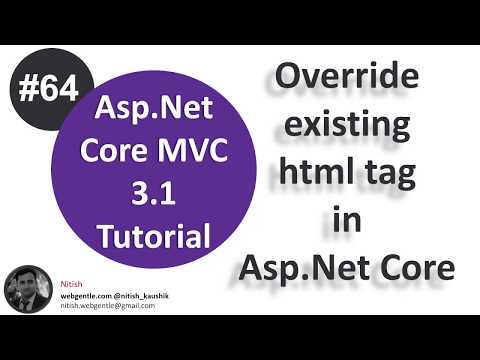Would Clobber Existing Tag
Introduction:
In the vast digital landscape, the organization and retrieval of information have become increasingly crucial. Tags have emerged as a powerful tool in this domain, making content easily searchable and accessible. However, existing tagging systems have their limitations. In this article, we will delve into the concept of tagging in digital systems, the purpose of tags, the limitations faced, the need for an improved tagging system, and the potential benefits and drawbacks of a new concept called “clobbering” existing tags. Furthermore, we will discuss the implementation of a new tagging system and explore the challenges of its introduction, along with considerations for transitioning from existing tags to a clobbering system.
The Concept of Tagging in Digital Systems:
Tagging is a method of assigning labels or keywords to digital content, enabling easy categorization and searchability. These tags serve as metadata, providing additional information about the content without altering its essence. Commonly used in various platforms such as social media, content management systems, and online databases, tags facilitate efficient organizing and retrieval of information.
The Purpose of Tags and Their Role in Organizing Information:
Tags play a crucial role in information organization by extracting essential details from content and creating associations. They provide a convenient way to index and categorize diverse data types, including images, videos, articles, and more. By utilizing tags, users can quickly locate specific content amidst a vast collection, leading to increased productivity and enhanced user experience.
The Limitations of Existing Tags and Their Impact on Data Organization:
Although existing tagging systems have proven useful, they suffer from limitations that hinder optimal data organization. One major drawback is the lack of standardization, leading to inconsistencies in how content is tagged. Different spellings, variations, or synonymous tags can cause confusion and fragmentation. Additionally, tags may be subjective, reflecting the perspective of the tagger rather than a universally shared viewpoint. This subjectivity can hamper effective information retrieval and compromise the accuracy of search results.
Understanding the Need for an Improved Tagging System:
To overcome the shortcomings of existing tags, there is a pressing need for an improved tagging system. This system should incorporate standardization to ensure consistency across content, enabling seamless navigation and precise search results. Furthermore, an ideal tagging system should offer flexibility and adaptability to accommodate evolving user needs and trends. Enter the concept of “clobbering” existing tags.
Introducing the Notion of “Clobbering” Existing Tags:
The term “clobbering” refers to the action of replacing or superseding existing tags with new, standardized tags. It focuses on ensuring the uniformity, accuracy, and efficiency of information organization. By replacing ambiguous or subjective tags with a unified set, data consistency can be achieved. This process entails thoroughly examining existing tags, identifying inconsistencies, and creating a new set of standardized tags that better represent the content. However, it is crucial to analyze the potential benefits and drawbacks before adopting this radical shift.
Exploring the Potential Benefits and Drawbacks of Clobbering Tags:
The benefits of clobbering existing tags are numerous. Firstly, it would enhance search precision, reducing ambiguity and ensuring accurate results. Tags that are standardized and widely accepted would eliminate variations, synonymous tags, and potential spelling errors. This, in turn, would increase the effectiveness of search algorithms and improve the overall user experience. Moreover, a single set of standardized tags would enable seamless data integration between multiple systems and software, fostering interoperability and collaboration.
However, there are potential drawbacks worth considering. Implementing a clobbering system may generate resistance or confusion among users accustomed to existing tags. It would require comprehensive communication and extensive user training to facilitate a smooth transition. Additionally, there is a risk of losing valuable depth and context contained within specific tags that might be overlooked during the clobbering process. Striking a balance between standardization and preserving valuable metadata is crucial.
Implementing a New Tagging System that Would Clobber Existing Tags:
The implementation of a new tagging system that clobbers existing tags involves careful planning and execution. Collaboration between software developers, content owners, and end users is essential. The transition process should begin with a thorough analysis of existing tags, identifying patterns, and classifying tags based on their similarity. A new standardized tag set should then be created, incorporating feedback from users and leveraging industry best practices. Simultaneously, a migration plan should be formulated, outlining the steps, timeline, and communication strategy to ensure a seamless transition.
Analyzing the Impact and Possible Challenges of Introducing a New System:
Introducing a new tagging system that clobbers existing tags undoubtedly carries significant impacts and potential challenges. The greatest benefit would be a streamlined, accurate, and efficient organization of data, leading to improved searchability and productivity. However, the challenges lie in managing the transition, addressing user resistance and concerns, and effectively communicating the benefits of the new system. Meticulous planning, user involvement, and constant communication are crucial in mitigating potential challenges and maximizing the positive impact.
Considerations for Transitioning from Existing Tags to a Clobbering System:
A smooth transition from existing tags to a clobbering system requires careful consideration of several factors. User training and education should be prioritized to familiarize individuals with the new system and alleviate potential resistance. It is also essential to create a space for user feedback and maintain open lines of communication to address concerns during and after the transition. Mechanisms for preserving valuable metadata should be considered, ensuring that the clobbering process does not compromise the contextual richness embedded in certain tags.
FAQs:
1. Are clobbering systems applicable across different digital platforms?
Yes, clobbering systems can be implemented in various digital platforms, including social media, content management systems, and online databases.
2. How long does the transition from the existing tagging system to a clobbering system typically take?
The timeline for transitioning to a clobbering system depends on various factors, such as the scale of the digital ecosystem and the complexity of existing tags. However, a successful transition can range from a few months to a year, considering the planning, execution, and training phases.
3. Will all existing tags be completely replaced during the clobbering process?
While the aim is to replace existing tags with standardized ones, careful consideration should be given to preserving valuable metadata during the clobbering process. A balance needs to be struck between standardization and retaining contextual richness when replacing tags.
Conclusion:
The concept of clobbering existing tags presents an opportunity to revolutionize data organization. By replacing fragmented, subjective, and inconsistent tags with standardized ones, a clobbering system can improve search precision, interoperability between systems, and overall user experience. While the implementation and transition pose challenges, careful planning, communication, and preservation of valuable metadata can ensure a successful shift. The journey toward embracing a new tagging system that would clobber existing tags represents a promising step forward in efficient information organization and retrieval.
(#64) Override Existing Html Tag In Asp.Net Core | Htmltargetelement | Asp.Net Core Tutorial
Keywords searched by users: would clobber existing tag
Categories: Top 79 Would Clobber Existing Tag
See more here: nhanvietluanvan.com
Images related to the topic would clobber existing tag

Found 27 images related to would clobber existing tag theme



Article link: would clobber existing tag.
Learn more about the topic would clobber existing tag.
- How to get rid of “would clobber existing tag” – Stack Overflow
- Allow to force update tags : IDEA-211565 – YouTrack
- Git – How to get rid of “would clobber existing tag” – iTecNote
- GDK Update Error: Clobbering an Existing Tag – GitLab.org
- 关于gitlab报错would clobber existing tag 的解决办法原创
- Resolve tag clobber – Kleinprojects